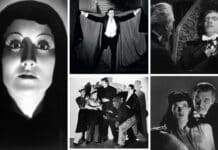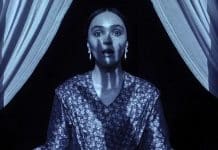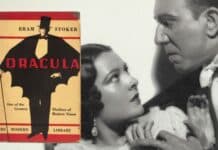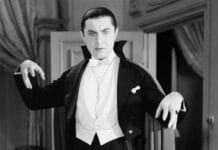Richard Marsh’s The Beetle deserves greater recognition as a classic of Victorian Gothic fiction, despite ultimately losing the longevity battle to Dracula, writes DAVID TURNBULL
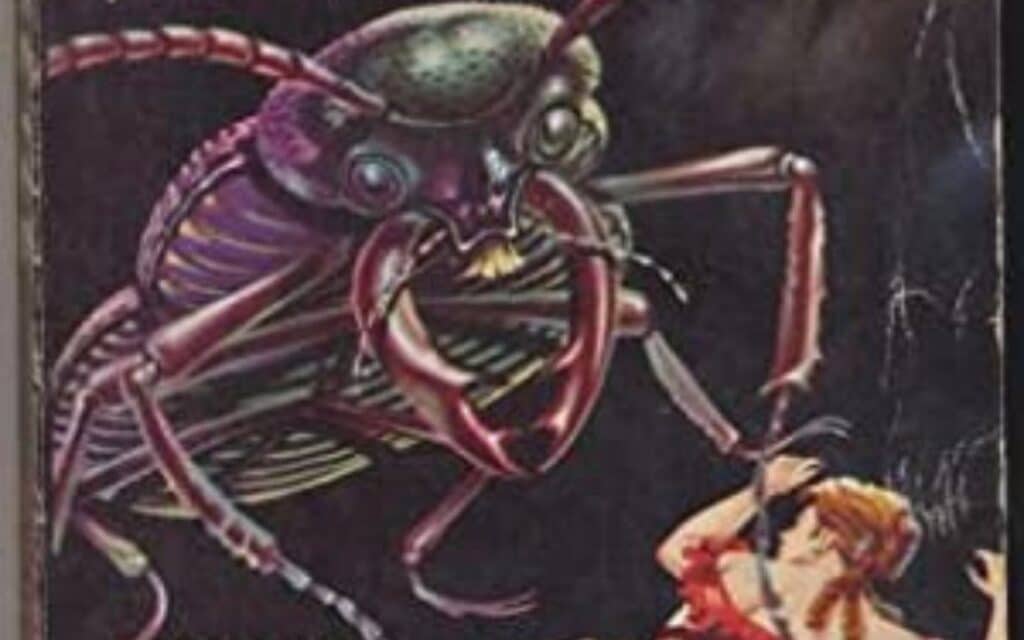
In Renfield, the comedy action horror film currently on release in cinemas, Nicholas Cage is the latest in a long line of actors who have depicted Count Dracula on stage, television, and the big screen. Since its publication in 1897 Bram Stoker’s Dracula has provided the source material for many dramatic and literary interpretations, and not only of the Dracula character himself.
The current film feature Nicolas Hoult as Renfield, the vampire’s unfortunate familiar, a relatively minor character in the original novel. Van Helsing, the vampire hunter from the novel, was played by Hugh Jackman in the 2004 movie of the same name. While the Netflix TV series, again of the same name, centred on descendants of the Van Helsing line in a future vampire apocalypse based on a series of graphic novels. On the subject of graphic novels, Mina Murray/Harker, a key character in Dracula, is reimagined in Alan Moore’s League of Extraordinary Gentlemen and was played by Peta Wilson (better known for her lead role in La Femme Nikita) the 2003 movie adaptation.
The Dracula story itself has been picked up from where Bram Stoker left it by many authors. Notably in the series of novels by Fred Saberhagen where Dracula takes centre stage and those of Dacre Stoker, Bram Stoker’s great grandnephew. Not to forget the entire alternative history created by Kim Newman in his Anno Dracula series, which starts with the Count’s seduction of Queen Victoria and has him keeping her on a leash as he sets about taking over the British Empire.
The Beetle, a rival for Dracula’s crown
However, Dracula’s widespread influence and enduring longevity was by no means guaranteed. When it was first published it had a rival for the crown. The Beetle, by Richard Marsh, was published within two weeks of Dracula hitting the bookshelves. Initially the critic’s reviews of The Beetle were considerably more favourable than those of Dracula. It was also far more popular with the reading public, outselling Stoker’s novel six times over in their first year of publication. Stoker himself acknowledged the influence of The Beetle on his own 1903 novel, The Jewel of the Seven Stars.
Considering that Marsh, real name Richard Heldman, was an established author with four other novels already under his belt, it is perhaps understandable that both critics and the public were more willing to take a chance on his work than that of Stoker, whose only claims to fame at that time were as the assistant to the actor Henry Irving and as the manager of the Lyceum Theatre on London’s Strand.
There are a good number of similarities between the two novels. Both pandered to the irrational Victorian fear of the foreigner. Dracula hailing from the Carpathian Mountains, the character of the Beetle from Egypt. Both characters were immortals of supernatural origin. Dracula at the time of the novel is around four hundred years old. The Beetle is a much older entity, perhaps thousands of years old.
Both possess a power to entrance their victims through the medium of hypnosis. Both have the power to transform. Dracula into a bat or a dog, whereas the Beetle, either a human who can transform into bug or possibly a bug which can transform into a human, also has the ability to change sex, appearing as an elderly man in first part of the novel and as a sultry young woman toward the end.
Both have arrived on the shores of Britain with malicious intent. Dracula to infect others and spread vampirism. The Beetle to exert revenge on a Member of Parliament it holds responsible for the death of a High Priestess. Both novels are written from the perspective of multiple characters. Dracula in the epistolary style through letters, and diary and journal entries. The Beetle seen from the perspective of different characters and story arcs.
So why is it that the more popular of the two novels in its day is now the lesser known and the least emulated of the two? On his Gothic Wanderer blog, American academic, Tyler Tichelaar, has put this down to Marsh never fully explaining the mystery of The Beetle. In Dracula, he says, Stoker uses the character of Van Helsing to explain the origins of the monster and the lore surrounding vampires. No such character exists in The Beetle, so the background to the creature remains unclear and unresolved.
I would argue that this also comes down to a large extent to Dracula coming out way ahead of The Beetle in term of stage and screen adaptations. The Beetle was made into a silent movie in 1919, beating the first onscreen depiction of Dracula by two years. Directed by Alexander Butler and staring Maudie Dunham, no copies of the film have survived. A stage play of The Beetle, written by J.B. Fagan and staring Catherine Lacey, was performed at London’s Strand Theatre in 1928.
Dracula’s first stage appearance was in Dracula, or the Undead, penned by Stoker himself and performed at the Lyceum Theatre in 1897 as one off event, shortly before the publication of the novel to establish copyright. Contrary to popular belief, F.W. Murnau’s Nosferatu was not the first onscreen interpretation of the Dracula story. This fell to a 1921 Hungarian silent movie Drakula Halala (The Death of Dracula) directed by Karoly Lajthay. Of course, Nostferatu, which was released in 1922, and stared Max Schreck as Count Orlok, courted controversy when Stoker’s widow successfully sued Mornau for the unauthorised use of the Dracula story line.
The first officially authorised stage play of Dracula, written by Hamilton Dean, premiered at the Grand Theatre in Derby in August 1924. In 1927 it was rewritten John L Balderston for the American stage. In the 1970s the American version was revived for a highly acclaimed Broadway production staring Frank Langella as the vampire count, a role he then reprised in the equally acclaimed 1979 cinema version.
But it is the 1930s American stage version which really set Dracula on course to outstrip The Beetle in terms of its longevity. This was largely down to Romanian actor and political refugee, Bela Lugosi, whose stage performances in New York and California came to the attention of director Tod Browning who cast him in the iconic 1931 Universal Studio Dracula film, largely based on the stage play and endorsed by the Stoker estate.
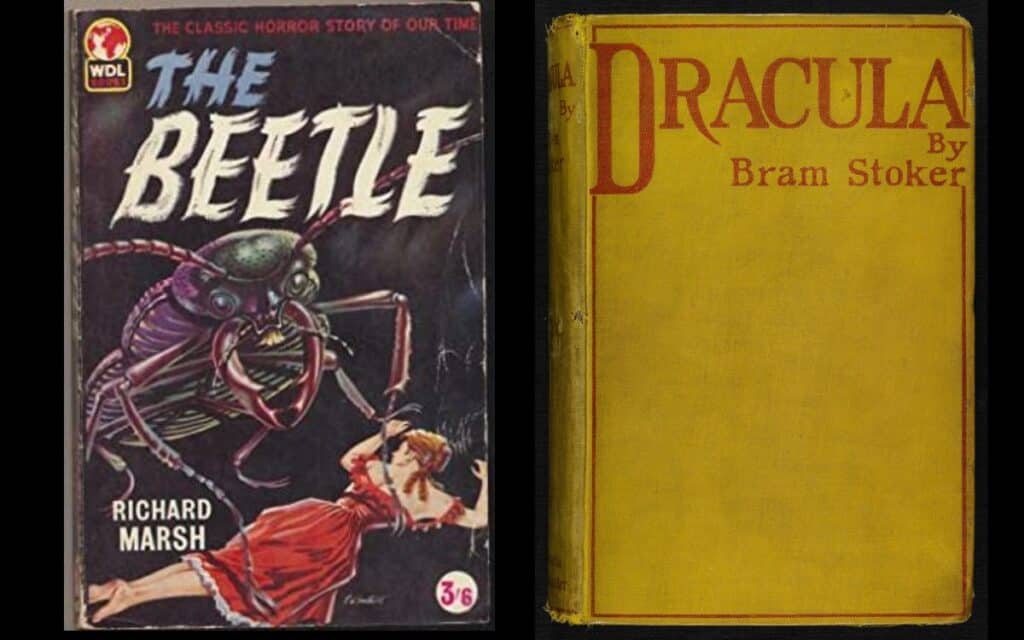
From the moment Lugosi stood on the crumbling steps of castle Dracula and uttered the line ‘Ah the children of the night, how sweet their song,’ to a backdrop of a pack of wolves howling in the forest, audiences were hooked. Lugosi would reprise the role many times on stage and screen, giving one of his last stage performances in a theatre in Derby where the British version of the play had made its first debut. Just over 30 years later Christopher Lee would pick up Lugosi’s mantle and reprise the role many times for the Hammer Horror Dracula movies. In 1992 Gary Oldman would recreate Lugosi’s stairwell scene word for word in Francis Ford Coppola’s Bram Stoker’s Dracula.
And so it has been now for almost a century now. It’s as if the cinema and the novels that followed achieved for the Dracula exactly what his character set out to do in the novel. Constantly infecting new converts and spreading vampirism far and wide. An aspiring writer sees a Dracula movie or reads a vampire novel, and, feeling the fire in their blood, sets out to create another vampire.
Stephen King gets bitten by the vampire and creates his own vampire in Salem’s Lot. Ann Rice gets bitten by the vampire and creates the vampire Lestat, and a host of other vampires. Charlaine Harris gets bitten by the vampire and creates the vampires who populate the world of Sookie Stackhouse. Stephanie Myers gets bitten and creates the sparkling vampires in Twilight. Guillermo Del Torro and Chuck Hogan get bitten and reinvent the vampire myth in The Strain. There’s even a hand puppet vampiric count in Sesame Street. And on it goes, vampire begets vampire who, in turn, begets another vampire. Our appetite for vampire blood seems insatiable. We crave more.
Meanwhile The Beetle has enjoyed a little bit of a revival in recent years. A radio play written by Roger Danes, was broadcast on Radio 4 in 1997 and then repeated in 2014 and 2021. The book, out of print since 1960, is now back in print and has again received favourable critical attention as a classic example of Victorian Gothic fiction. Who knows, it may yet get another crack at being made into a movie.
However, it has probably, long since lost the battle for longevity to its rival. Vampires occasionally fall out of favour with the book reading and cinema going public, but are quickly reinvented and resurrected. In the Hammer versions, Peter Cushing’s Van Helsing usually destroyed the vampire at the end, only for the Prince of Darkness to rise again in the next move. Exactly as he has done recently in the somewhat over-the-top guise of Nicholas Cage.
DAVID TURNBULL is a writer of short fiction, with stories published in many magazines and anthologies. His near future horror novella HUSks can be found here. His blog is “Things That Go Bump in My Mind”.



